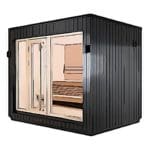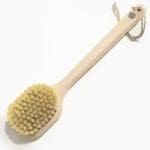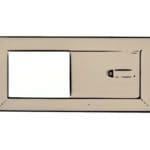10 Real Sauna Benefits That Sound Totally Made Up

Generations of sauna bathers have continued the tradition knowing one thing: it makes them feel better, they like it, and they can’t imagine life without it (OK, that’s 3 things). Many Finnish men will tell you that quantifying sauna benefits is not important, “if sauna caused cancer, I would still sauna,” sums up the attitude.
For many, quantifying health benefits is just not the point of a sauna, and distracts from the practice. If that’s you, awesome. It’s not necessary to understand the science and research to enjoy a good sauna. You can get the health benefits either way with an authentic sauna.
But a consistent sauna practice is a big time commitment, and if you’re like us, you could use a reminder of the amazing sauna benefits from time to time. There’s a reason saunas are being recommended by doctors for preventative and treatment. The sauna is the most enjoyable way to increase overall health and quality of life. Let’s be honest: exercise, fasting, and eating healthy isn’t enjoyable for most of us.
Knowing these benefits backed by science makes it easier to carve out time for yourself, and that’s good.
The Sauna Cold Plunge Routine are now considered the third pillar of physical fitness, right up there with exercise and a healthy diet. Here’s why…
Decrease In All Cause Mortality by 40%
Want to live longer? Well, studies have shown that people who sauna regularly die less than those who don’t. With all the big claims in the sauna industry, the most sensational of them all is backed by solid research (recommended reading Outlive: The Science and Art of Longevity).
The most intriguing takeaway from the studies? The frequency you sauna seems to increase longevity. So, should you sauna every day? Well, if you want to live longer, maybe you should, according to the breakthrough study published by JAMA Internal Medicine.
Men who used the sauna 2-3 each week had a 24 percent decrease in all-cause mortality compared to those who took one or less saunas a week. Men who sauna 4-7 times each week had a 40 percent decrease in mortality.
To be honest, that’s why we started Sauna Marketplace. We used to run a website (which still exists!) called SaunaShare where you can find mobile saunas to rent. But it became clear that to really get the benefits you need to sauna much more frequently. Getting a home sauna is the best way to get these results..
These are incredible results that need to be further studied. This study was done over a 21 year period with 2,315 Finnish men ages 42-60 when they started.
Peter Attia, author of ‘Outlive, The Science and Art of Longevity (2023)’ posits that regular sauna use, particularly sessions lasting 20 minutes or more at 170 degrees Fahrenheit, four times a week, mimics cardiovascular exercise. This can stimulate increased levels of various hormones and heat shock proteins, potentially conferring longevity benefits similar to regular exercise.
Attia notes however that it’s difficult to distinguish the benefits because sauna use is typically correlated with a more active lifestyle. So if you want to be safe, do hot yoga in the sauna for all the benefits of sauna and exersize.
Peter Attia, Andrew Huberman (who calls it ‘Deliberate Heat Exposure’), and Joe Rogan all agree that time spent in the sauna is not time wasted since, statistically, you may get it back at the end of your life! If that’s not enough to make you stop reading and find the nearest sauna, we’re not sure what is, but we’ll keep trying.
What’s that you say? You don’t care about living longer but want to improve your athletic performance fast? Well, sauna just happens to…
Improve endurance by 32%
We work with a lot of endurance athletes and have learned a ton from our friend Phil at Critical Oxygen podcast.
Regular sauna use has radically improved endurance athletes’ performance, especially after a workout. One study shows that regular sauna sessions can increase a distance runner’s ability to run past exhaustion by 32%.
The increased endurance gained from regular sauna use is associated with increased plasma and red blood cells, which will have compounding benefits in overall health.
The best explanation for this may be from pro surfer Laird Hamilton. He claims thermoregulation (heating up and cooling down the body) is the most demanding thing any athlete does. “If you train in hot and cold, you can build that system up and make that system stronger.”
The main idea is that the body gets very efficient at managing temperature, especially when the sauna practice includes a cold exposure component like ice bath or cold shower.
The heat exposure of the sauna trains athletes to regulate their core temperature and improve peak performance by not overheating during long, demanding activities. When athletes start to deteriorate in performance, it’s usually because they’re overheating, especially in endurance sports.

We really like the SaunaLife G4 for heat training in the sauna as there is room for an exercise bike.
So saunas help improve peak performance, but what about helping with peak life?
Stress relief
If you’ve ever taken a sauna, a study showing that saunas relieve stress is like a study proving saunas are hot. You already know that.
Nevertheless, some clinical studies have shown frequent sauna is good for stress management and anxiety. Researchers have contributed sauna stress relief to ‘forced mindfulness’ and the “release of endorphins and other opioid-like peptides.” There’s also a likely connection between improved sleep quality, taking time out of a busy life, and maybe even the placebo of taking time for yourself on a stress-relieving activity.
This highlights how the positive benefits of sauna use are compounding and difficult to measure. For instance, taking time out of your day for yourself, regardless of the activity, could decrease mortality for sauna users.
The most relaxing sauna, in our experience, is the one with the most even temperatures. For the most enjoyable, relaxing sauna experience that you’ll want to stay in we really recommend Saunum Heaters.
Saunum Heaters redistribute the hottest air from the ceiling and blend it with cooler air at the floor. The result is more even temperatures that won’t make you dizzy and are much more relaxing. We know a lot of people who have told us they didn’t like saunas but had their minds changed with the Saunum experience.
And the longer you stay in the sauna, the better you’ll sleep.
Better Sleep
The sleep impact of skin temperature and thermoregulation is an under-appreciated but growing field of study. Our brains are wired to take signals from skin that it’s safe to fall asleep, and to go deeper into sleep.
During daily activity, humans body temperature rises as our anthropological ancestors were hunting, gathering, and generally surviving. One signal that the stress of daily activity is over is the decline of core body temperature.
The drop in body temperature signals to the brain that it’s time to produce the sleep hormone, melatonin. This is why many of us find it harder to sleep on hot summer nights, and why it may be better to only turn the AC on at night. One way or another, you want the body temperature dropping before bed for better sleep.
It just so happens that a sauna is the best way to achieve this without additional mental stimulation before bed that could backfire. Sauna is good for increasing body temperature before bed, putting you in the perfect condition to sleep like a baby.
Combats Cellular Aging
Certain proteins play an important role in human lifespan and healthy aging, known as FOX03 proteins, which have been called the “longevity gene” for a good reason. FOX03s regulate genes that combat cellular aging and keep important proteins, DNA, and lipids healthy while protecting stem cell function.
FOX03s can also help repress tumors, repair DNA, and maintain a healthy immune system.
While there’s no FOX03 supplement, but heat stress like sauna use helps activate them and shifts their activities toward resistance. It’s almost like waking up and activating a super protein that can have incredible effects on anti-aging.
Heat Acclimation
Did you know saunas are common in the Middle East, Mexico, and many other hot climates? This is because sauna exposure greatly improves your ability to handle heat in your daily life or athletic endeavors.
Again, check out our friend Phil for the physiology and science behind heat acclimation, especially for endurance athletes.
The San Francisco 49es Football team recently trained for their game in Tampa Bay, Florida with a sauna tent at their practice field. In this particular sauna study, the San Francisco 49ers won the game 31-17. Want to train like a pro? Get yourself and your team a wood-burning sauna tent.
Mood and Depression
Sauna has been shown to reduce the symptoms of depression, thought he studies have very small samples. ‘Repeated Thermal Therapy Diminishes Appetite Loss and Subjective Complaints in Mildly Depressed Patients’ is notable but only has a 28 person sample size.
Another study with 30 people showed regular sauna use improved depression over a 6 week timeframe.
Beta-endorphins and the opioid system provide plenty of theory on how sauna use can improve mood and cure depression. Additionally, the community aspect of traditional sauna culture, along with the act of taking time for oneself are both likely to improve mental health.
More research needs to be done in this field but anecdotal evidence and popular opinion is pretty unanimous that sauna use can improve mood. It’s safe to say sauna is good for mental health.
Reduces Inflammation
Acute inflammation happens when the body overreacts to minor injuries or infections with local redness, swelling, or fever.
It occurs on a cellular level in response to toxins or other stressors and is often “invisible.” It plays a key role in developing many chronic diseases, including cancer, cardiovascular disease, and diabetes.
C-reactive protein, or CRP, one of several blood proteins often referred to as acute phase reactants participates in the body’s inflammatory cascade. Elevated CRP is associated with the development of atherosclerosis, loss of arterial compliance, and incidence of cardiovascular events.[53] Sauna use, however, reduces blood levels of CRP. In a study of more than 2,000 men living in Finland, CRP levels were inversely related to the frequency of sauna bathing in a dose-response fashion, with lower levels linked to greater frequency.[54]
As described above, IL-10 is a potent endogenous anti-inflammatory protein. In a study involving 22 healthy male athletes and non-athletes who received two 15-minute sauna sessions (recommended sauna duration) at 98.2°C (208°F) separated by a 5-minute cool shower, the men’s resting IL-10 levels increased, and this adaptation occurred faster in the athletes. A slight increase in some of the HSPs was also observed.[55]

Want a sauna to mimic these studies? If you’re in the USA, regulations called the UL standards limit sauna heaters at 180 degrees. That means you will not reach the temperatures that could be required for these benefits.
Luckily, HUUM found a way to bring their European sauna heaters over that certify under different standards and reach 230 degrees Fahrenheit! All our saunas can be paired with HUUM heaters to maximize your sauna benefits.
Cognitive Health Brain Speed Hormones Spike By Up to 900%
Saunas are good for brain speed and overall mental performance in interesting ways.
Attention span and mental focus have increased with regular sauna use, increasing the case for saunas in public schools and universities.
In fact, norepinephrine levels, a hormone associated with focus and attention spiked 310 percent in young men subjected to exhaustion in the sauna. Incredibly, Prolactin levels – associated with brain speed spiked by 900%
Improved Cardiovascular Health by 50%
One thing research has solidly, and repeatedly shown is that sauna is good for heart health and longevity.
Doctors and health experts used to warn against any sauna use for anyone with a heart condition. Today, that may be exactly what the doctor ordered.
Regular heat exposure helps kick in a protective biological response in the body that happens to protect against cardiovascular disease and related disabilities. These are similar biological responses that are kicked in and associated with regular exercise.
In both sauna sessions and moderate workouts, the heart rate and blood pressure spike during the activity but decline below their normal levels afterward. Consistently activating that response over a long period of time can improve blood pressure, blood cell health, heart function, and reduce inflammation.
There were incredible reductions in death from cardiovascular disease (CVD) associated with frequent sauna use. Heart related death was 27 percent lower for men who took saunas 2 to 3 times a week and 50 percent lower for men who were in the sauna 4 to 7 times a week compared with men who indulged just once per week.
Studies have also shown that sauna exposure may be an effective treatment for Congestive Heart Failure (CHF), Ischemic Heart Disease, Peripheral Artery Disease, Dyslipidemia, Hypertension, Endothelial Dysfunction, and Left Ventricular Dysfunction.
Negative Ions
In addition to all the health benefits discussed, using a sauna can also increase your exposure to negative ions, which are oxygen atoms charged with an extra electron. These ions are naturally created by the effects of water, air, sunlight, and the Earth’s inherent radiation. They are found in high amounts in forests, beaches, and waterfalls. They are also present in saunas, particularly in infrared saunas.
Negative ions are believed to produce biochemical reactions that increase levels of serotonin, a mood chemical in the brain, thereby alleviating depression, relieving stress, and boosting our daytime energy. Negative ions in the air may also have the effect of neutralizing harmful free radicals.
Furthermore, these ions are believed to have air-purifying properties by attaching to positively charged particles such as dust, pollen, and bacteria and causing them to drop to the ground. This can help improve air quality in your sauna, enhancing the relaxing and health-promoting environment.
Read more about the positive effect of negative ions in the sauna here.
Sauna Benefit Fire Round! Is Sauna Good For…
Is Sauna Good For a Cold?
While there is research showing frequent sauna sessions u003ca href=u0022http://www.ncbi.nlm.nih.gov/pubmed/2248758?ordinalpos=1u0026amp;itool=EntrezSystem2.PEntrez.Pubmed.Pubmed_ResultsPanel.Pubmed_DefaultReportPanel.Pubmed_RVDocSumu0022u003ereduce the likelihood of a coldu003c/au003e, what about after it’s too late? Can a sauna help reduce the symptoms and help recovery from a cold or flu?u003cbru003eu003cbru003eSaunas are a common remedy for cold symptoms in Finland. In addition to improving drainage, the heat itself can weaken many cold and flu viruses, similar to the body response of a fever. There also seems to be evidence that sitting in a sauna can speed up the recovery and reduce symptoms of a cold.u003cbru003eu003cbru003eSome researchers also suggest heat exposure may help kickstart the immune system. If you’ve had a long cold, it may be worth sitting in the sauna and see what happens.u003cbru003eu003cbru003eHowever, a u003ca href=u0022https://saunamarketplace.com/can-sauna-kill-coronavirusu0022u003esauna will not cure coronavirusu003c/au003e after a person has been infected.
Is Sauna Good For Skin and Acne?
One u003ca href=u0022https://saunamarketplace.com/celebrities-ceos-athletes-and-artists-who-sauna/u0022u003ereason so many celebrities saunau003c/au003e is they claim it does wonders for their skin. The most simple reason a sauna is good for skin is that you sweat out toxins, which clears pores – pretty simple stuff. Saunas have the additional benefit of improving circulation which is also great for delivering nutrients to your skin.u003cbru003eu003cbru003eSauna is not a miracle cure for acne (or else no Finnish person would ever have acne) but it clearing pours and sweating can only be beneficial for improving acne. Having a good sauna routine with proper rinsing and cleaning helps remove the toxins as you sweat them out.
Is Sauna Good For You?
Yes! In general, Sauna is good for heart health, skin health, mental health, and studies show a correlation between frequent sauna use and longer life.
Is Sauna Good for Back Pain?
A sauna can relieve pain from back pain by promoting blood flow and relaxing sore muscles. Heat therapy, whether a heat pad or sauna, is effective for all chronic muscle pain and sore joints including those cause by arthritis.
Is Sauna Good For Hair?
By increasing the blood flow, and delivering nutrients to the scalp, many theorize that saunas are good for hair growth and rejuvenation. It’s true that improving the nutrients our bodies crave can improve hair growth, so this can be true for some people.u003cbru003eu003cbru003eThe downside of a sauna is that it can dry your hair and you may actually be sweating out some of the beneficial nutrients that you are trying to deliver to your hair. Make sure to replenish after a sauna with healthy food high in vitamins, leafy greens are an excellent choice.
Is Sauna Good For Weight Loss?
Sauna vests, sauna belts, and sauna sessions are not necessarily effective at long term, healthy weight loss. They are often used for their nearly immediate effect of water weight loss, which is really just sweating out water stored in your body.u003cbru003eSaunas after your favorite workout are an excellent combination for loosing weight and feeling rejuvenated.
Additional Considerations About Sauna Benefits
A note about sample sizes, money, and the difference between pharmaceutical drugs and lifestyle treatments.
Repeated studies and research with adequate sample size is extremely expensive. We have good research about drugs, new technology, and anything that is patentable because the benefiting company pays for it. Sauna research is largely limited to grad students and researchers with limited budgets.
The fact that we have so many promising leads on sauna health benefits is extremely promising, and further research will likely show regular sauna use is better than conventional medicine in many instances.
Additionally, if sauna treatment were a pharmaceutical drug, it would be given to millions of people based on the research results. Most people have been conditioned to want a simple drug instead of fighting disease with lifestyle choices like exercise, healthy food, meditation, and sauna bathing.
Given the research, if sauna were a drug, it would be a miracle drug.
What’s The Best Sauna For Achieving Health Benefits?
Infrared Sauna Health Benefits Vs. Traditional Sauna Health Benefits
There is a lot of noise out there regarding the health benefits of infrared vs traditional saunas. For example, infrared saunas are touted to be weight loss agents and powerful detoxification treatments. Health claims can lead to confusion and misinformation. The first part of the health series will aim to break down and explore the existing research comparing traditional and infrared saunas.
Most sauna research has focused on traditional saunas, which heat the air around you. The actual health research on infrared saunas is unfortunately pretty limited but so far, at this point there doesn’t seem to be any additional health benefits with infrared saunas. Both forms of sauna bathing can involve rituals of cooling-off periods with rehydration with water prior to, between, and proceeding sauna bathing. Both types of sauna experiences increase one’s cardiac workload about as much as a brisk walk.
Infrared saunas warm your body directly, penetrating the skin more deeply and can cause someone to sweat more vigorously at lower temperatures. Some people might find this more comfortable than traditional saunas but there are no known additional health benefits due to this.
Two studies with low subject sizes found improvement in chronic pain and chronic fatigue syndrome. The study assessing chronic pain studied 46 subjects with chronic pain. All underwent four weeks of standard multidisciplinary inpatient treatment, but half of the subjects were randomly assigned to participate in daily 15-minute infrared sauna sessions. After two years, the sauna-bathing subjects were significantly more likely to have returned to work (77% versus 50%), had improved sleep scores, and scored lower in pain behavior and anger scores. Scientists Masuda et al. wrote a case report about two patients with chronic fatigue syndrome who had 25 daily infrared sauna sessions. The two subjects experienced objective improvement in fatigue, pain, and sleep.
Researchers are very careful to state that sweating in general may be associated with detoxification of the body and its not very clear how well saunas rid the body of toxins or if there is any difference between infrared or traditional saunas. There is inconsistent evidence that infrared sauna bathing of any kind leads to sustained weight loss, decreased blood pressure, or changes in blood sugar levels. Conversely, existing research suggests that traditional saunas bathing can lower of blood pressure and decrease risk of fatal heart disease. However, traditional saunas have been researched more, which might be why there is variation in the health benefits between the two types.
Infrared sauna bathers are less likely to experience the rare side effect of sauna-induced burns due to the lower temperatures needed. For now, there don’t seem to be any significant health risks associated with either infrared or traditional saunas.
Disclaimer: If you have pacemakers, implants, diabetes or are taking medications, it is best to ask your doctor for medical advice regarding sauna use.
Dry Sauna Benefits Vs. Wet Sauna Benefits
Nearly all studies, especially Finnish studies were done in a wet/dry sauna that starts off dry until the bather splashes water on the rocks, creating steam. Typical sauna temperature would be around 170 degrees F and 30 percent humidity. See The Rule Of 200 for more.
Sauna Frequency For Maximum Sauna Health Benefits
Many sauna studies, including longevity studies had a dose dependent effect. This is important for two reasons. The first is that it gives credibility to the study, and shows sample size and selection likely isn’t a huge problem.
The second is that it answers how often you should use sauna to get benefits. In most dose-dependent studies, those who had a regular sauna practice of 5 times or more per week had the biggest benefits. It certainly seems like the more frequently you can sauna, the better.
Sauna Health Benefits Conclusion
Regular sauna exposure is a good bet if you want to run further, be happier, live longer, or beat the Tampa Bay Buccaneers. Sauna benefits can be hard to quantify, especially if you are enjoying it with family or using it as a time for self-reflection or meditation.
So make the sauna a part of your regular routine, knowing that it can benefit almost every aspect of your life. It would be hard to find more bang for your buck, whether time or money than a sauna. What sauna benefits have you personally experienced?
References and Research Notes
Far-infrared saunas for treatment of cardiovascular risk factors
Beever, R. (2009). Far-infrared saunas for treatment of cardiovascular risk factors: Summary of published evidence. Can Fam Physician, 55(7), 691-696. PMC2718593. Retrieved from: https://www.ncbi.nlm.nih.gov/
KEY POINTS and SAUNA BENEFITS
-
Because infrared heat penetrates more deeply than warmed air, users of far-infrared saunas (FIRSs) develop a more vigorous sweat at a lower temperature than users of traditional saunas. The cardiovascular demand imparted by thermoregulatory homeostasis is similar to that achieved by walking at a moderate pace. As such, FIRSs might be of particular benefit to those who are sedentary due to various medical conditions like osteoarthritis or cardiovascular or respiratory problems.
-
Although the evidence is limited, it does suggest a number of benefits of FIRS use, including effects on systolic hypertension, New York Heart Association class and clinical symptoms of congestive heart failure, premature ventricular contractions, brain natriuretic peptide levels, vascular endothelial function, exercise tolerance, oxidative stress, chronic pain, and possibly weight loss and chronic fatigue. No adverse events were reported in any of the studies.
Arsenic, cadmium, lead, and mercury in sweat: A systematic review
Sears, M.E., Kerr, K.J., Bray, R.I. (2012). Arsenic, cadmium, lead, and mercury in sweat: A systematic review. J Envir and Public Hlth
KEY POINTS and SAUNA BENEFITS
- Sweating offers potential and deserves consideration, to assist with removal of toxic elements from the body, a well-known sauna benefit.
- As toxic elements are implicated in many serious chronic conditions, research is needed in patients with select conditions to evaluate the body burden and to test the efficacy of source removal, dietary choices and supplements, interventions that induce sweating, and treatments with drugs, all to enhance excretion of toxic elements with the goal of clinical improvement.
- Both biochemical and clinical outcomes should be examined in order to develop and monitor clinical interventions that are both safe and effective.
Hussain, J. & Cohen, M. (2018). Clinical effects of sauna bathing: A systematic review. Evidence-based Complementary and Alternative Medicine, vol. 2018, Article ID 1857413, 30 pages, 2018. https://doi.org/10.1155/2018/
KEY POINTS
- Regular infrared and/or Finnish sauna bathing has the potential to provide many sauna benefits, especially for those with heart-related and rheumatological disease, as well as athletes seeking improved exercise performance.
- The mechanisms for these sauna benefits may include increased bioavailability of NO (nitric oxide) to vascular endothelium, heat shock protein-mediated metabolic activation, immune and hormonal pathway alterations, enhanced excretions of toxicants through increased sweating, and other hormetic stress responses.
- Currently there is insufficient evidence to recommend specific types of sauna bathing for specific clinical conditions. While regular sauna bathing appears to be well-tolerated in the clinical setting with only minor and infrequent adverse effects reported, further data on the frequency and extent of adverse effects is required.
The effects of repeated thermal therapy for two patients with chronic fatigue syndrome.
Masuda, A., Kihara, T., Shinsato, T., Minagoe, S., Tei, C. (2005). The effects of repeated thermal therapy for two patients with chronic fatigue syndrome. J Psychosom Res, 58(4), 383-7. https://www.sciencedirect.
KEY POINTS
- Repeated thermal therapy might be a promising method for the treatment of Chronic Fatigue Syndrome.
Studies and Further Reading for Cardiovascular Sauna Benefits:
- a b Kukkonen-Harjula, Katriina, Pekka Oja, Kai Laustiola, Ilkka Vuori, Jukka Jolkkonen, Simo Siitonen, and Heikki Vapaatalo. Haemodynamic and hormonal responses to heat exposure in a Finnish sauna bath European Journal of Applied Physiology and Occupational Physiology 58, no. 5 (March 1989): 543–50. doi:10.1007/bf02330710.
- ^ Taggart, P., P. Parkinson, and M. Carruthers. Cardiac Responses to Thermal, Physical, and Emotional Stress BMJ 3, no. 5818 (July 1972): 71–76. doi:10.1136/bmj.3.5818.71.
- ^ Ketelhut, S., and R.G. Ketelhut. The blood pressure and heart rate during sauna bath correspond to cardiac responses during submaximal dynamic exercise Complementary Therapies in Medicine 44 (June 2019): 218–22. doi:10.1016/j.ctim.2019.05.002.
- ^ Tei, Chuwa, Teruhiko Imamura, Koichiro Kinugawa, Teruo Inoue, Tohru Masuyama, Hiroshi Inoue, Hirofumi Noike, et al. Waon Therapy for Managing Chronic Heart Failure Results From a Multicenter Prospective Randomized WAON-CHF Study Circulation Journal 80, no. 4 (2016): 827–34. doi:10.1253/circj.cj-16-0051.
- ^ Kihara, Takashi, Sadatoshi Biro, Yoshiyuki Ikeda, Tsuyoshi Fukudome, Takuro Shinsato, Akinori Masuda, Masaaki Miyata, et al. Effects of Repeated Sauna Treatment on Ventricular Arrhythmias in Patients With Chronic Heart Failure Circulation Journal 68, no. 12 (2004): 1146–51. doi:10.1253/circj.68.1146.
- ^ Sobajima, Mitsuo, Takashi Nozawa, Hiroyuki Ihori, Takuya Shida, Takashi Ohori, Takayuki Suzuki, Akira Matsuki, Satoshi Yasumura, and Hiroshi Inoue. Repeated sauna therapy improves myocardial perfusion in patients with chronically occluded coronary artery-related ischemia International Journal of Cardiology 167, no. 1 (July 2013): 237–43. doi:10.1016/j.ijcard.2011.12.064.
- ^ Tei, Chuwa, Takuro Shinsato, Masaaki Miyata, Takashi Kihara, and Shuichi Hamasaki. Waon Therapy Improves Peripheral Arterial Disease Journal of the American College of Cardiology 50, no. 22 (November 2007): 2169–71. doi:10.1016/j.jacc.2007.08.025.
- ^ Shinsato, Takuro, Masaaki Miyata, Takuro Kubozono, Yoshiyuki Ikeda, Shoji Fujita, So Kuwahata, Yuichi Akasaki, Shuichi Hamasaki, Hiroshi Fujiwara, and Chuwa Tei. Waon therapy mobilizes CD34thplus cells and improves peripheral arterial disease Journal of Cardiology 56, no. 3 (November 2010): 361–66. doi:10.1016/j.jjcc.2010.08.004.
- ^ DOI: 10.5604/17342260.1133107
- ^ Gryka, Dorota, Wanda Pilch, Marta Szarek, Zbigniew Szygula, and Łukasz Tota. The effect of sauna bathing on lipid profile in young, physically active, male subjects International Journal of Occupational Medicine and Environmental Health 27, no. 4 (January 2014). doi:10.2478/s13382-014-0281-9.
- ^ Whelton, Paul K., Robert M. Carey, Wilbert S. Aronow, Donald E. Casey, Karen J. Collins, Cheryl Dennison Himmelfarb, Sondra M. DePalma, et al. 2017 ACC/AHA/AAPA/ABC/ACPM/AGS/APhA/ASH/ASPC/NMA/PCNA Guideline for the Prevention, Detection, Evaluation, and Management of High Blood Pressure in Adults Journal of the American College of Cardiology 71, no. 19 (May 2018): e127–e248. doi:10.1016/j.jacc.2017.11.006.
- ^ Zaccardi, Francesco, Tanjaniina Laukkanen, Peter Willeit, Setor K Kunutsor, Jussi Kauhanen, and Jari A Laukkanen. Sauna Bathing and Incident Hypertension: A Prospective Cohort Study American Journal of Hypertension 30, no. 11 (June 2017): 1120–25. doi:10.1093/ajh/hpx102.
- ^ Lee, Earric, Tanjaniina Laukkanen, Setor K Kunutsor, Hassan Khan, Peter Willeit, Francesco Zaccardi, and Jari A Laukkanen. Sauna exposure leads to improved arterial compliance: Findings from a non-randomised experimental study European Journal of Preventive Cardiology 25, no. 2 (October 2017): 130–38. doi:10.1177/2047487317737629.
- ^ Kihara, Takashi, Sadatoshi Biro, Masakazu Imamura, Shiro Yoshifuku, Kunitsugu Takasaki, Yoshiyuki Ikeda, Yutaka Otuji, Shinichi Minagoe, Yoshifumi Toyama, and Chuwa Tei. Repeated sauna treatment improves vascular endothelial and cardiac function in patients with chronic heart failure Journal of the American College of Cardiology 39, no. 5 (March 2002): 754–59. doi:10.1016/s0735-1097(01)01824-1.
- ^ Tei, Chuwa, Yutaka Horikiri, Jong-Chun Park, Jin-Won Jeong, Kyoung-Sig Chang, Yoshihumi Toyama, and Nobuyuki Tanaka. Acute Hemodynamic Improvement by Thermal Vasodilation in Congestive Heart Failure Circulation 91, no. 10 (May 1995): 2582–90. doi:10.1161/01.cir.91.10.2582.
- ^ Tei, C., and N. Tanaka. Thermal vasodilation as a treatment of congestive heart failure: a novel approach J Cardiol 27, no. 1 (January 1996): 29–30
Type of Sauna For Maximum Health Benefits
You may have picked up on a common these of these health studies. All the health benefits that infrared sauna companies claim are found in studies using more traditional Finnish saunas that can reach 180 degrees Fahrenheit and beyond. The fact that Finland repeatedly is named the happiest country in the world could also be a testament to the mental benefits.
If investing in a home sauna for health benefits, make sure your sauna gets hot, creates steam by sprinkling water on the rocks, and has adequate ventilation.
We recommend these home saunas for sale.


 Prebuilt
Prebuilt Sauna Brushes
Sauna Brushes Vents
Vents